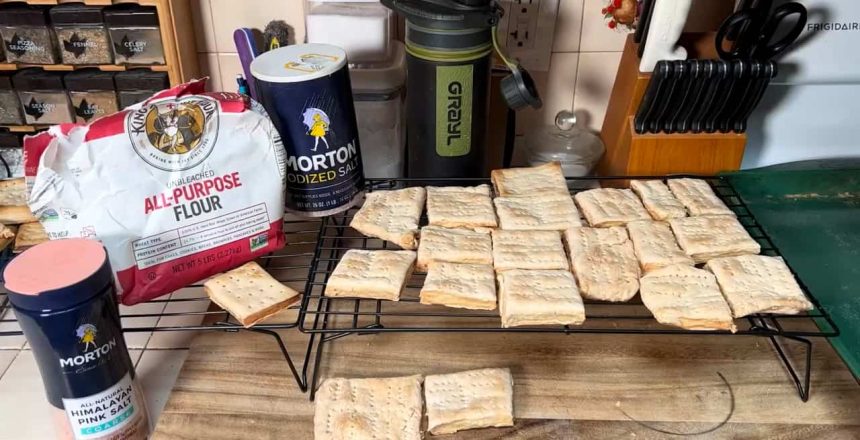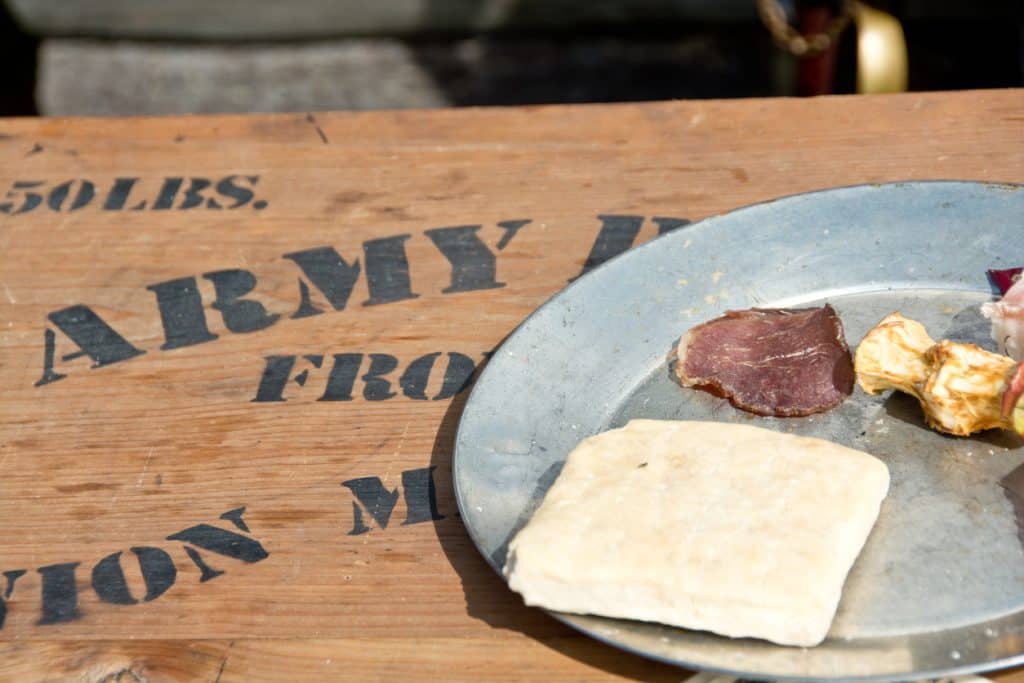Hardtack: A Survival Ration that can last 100+ Years

Hardtack: A Survival Ration that can last 100+ Years
The Timeless Art of Making Hardtack
Hardtack is a centuries–old survival food that has been used by sailors, soldiers, and adventurers alike. Its simplicity, durability, and long shelf life make it the perfect choice for emergency food storage or sustenance during long journeys. In this comprehensive article, we will teach you how to make Hardtack, explore its history, and discuss the various ways to incorporate it into your survival and preparedness plans.
Section 1: What is Hardtack?
At its core, it is a simple biscuit made from just three ingredients: flour, water, and salt. Its lack of moisture and fat allows it to be stored for years without spoiling, making it an ideal food source in times of scarcity or when traveling long distances without access to fresh food.
Section 2: The History of Hardtack
Hardtack has been a survival staple for centuries, dating back to ancient civilizations like Egypt and Rome. It gained popularity among sailors during the Age of Exploration, soldiers during the American Civil War, and both World Wars. Today, Hardtack continues to be a valuable addition to emergency food supplies and outdoor expeditions.
Section 3: Gathering Your Ingredients and Tools
To make it, you will need the following ingredients:
- 4 cups all-purpose flour
- 1 1/2 cups water
- One teaspoon salt
Additionally, you will require these tools:
- A large mixing bowl
- A rolling pin
- A dough cutter or knife
- A fork
- A baking sheet

Section 4: Making Hardtack: Step-by-Step Instructions
- Preheat your oven to 375°F (190°C).
- Combine the dry ingredients by mixing the flour and salt in a large mixing bowl.
- Add the water gradually to the dry ingredients, mixing as you go. Continue to add water until a stiff dough forms. The dough should not be sticky.
- Roll out the dough onto a clean surface using a rolling pin to achieve a thickness of approximately 1/4 inch (6 mm).
- Cut the dough into rectangles or squares, roughly 3 inches (7.5 cm) in size, using a dough cutter or knife.
- Puncture the dough pieces with a fork, creating a pattern of evenly spaced holes. This will help the Hardtack to cook evenly and prevent it from puffing up during baking.
- Place the dough pieces onto a baking sheet, ensuring they are spaced apart to allow for even cooking.
- Bake it in the preheated oven for 30 minutes, then flip each piece and continue to bake for an additional 30 minutes. The finished Hardtack should be hard and dry, with a light golden-brown color.
- Cool it on a wire rack before storing it in an airtight container.
Section 5: Storing and Consuming
To maximize the shelf life, store it in a cool, dry place away from direct sunlight and moisture. When properly stored, Hardtack can last for years. However, due to its toughness, softening it before consumption is often necessary. This can be done by soaking it in water, milk, or broth or by incorporating it into recipes such as stews or puddings.
Section 6: The Nutritional Benefits
While it is not a complete source of nutrition, it does provide a valuable source of calories and carbohydrates in times of need. It can be fortified with additional ingredients such as seeds, nuts, or dried fruits to enhance its nutritional value. However, it is essential to remember that adding these ingredients may reduce the overall shelf life of the Hardtack.
Section 7: Creative Recipe Ideas
Although traditional Hardtack is made with just flour, water, and salt, you can get creative with additional ingredients to add flavor and variety to your survival food. Here are a few ideas to inspire your hardtack-making endeavors:
- Herbed: Add dried herbs such as rosemary, thyme, or oregano to your dough for a flavorful twist.
- Spiced: Incorporate spices like cinnamon, nutmeg, or allspice to create a sweeter, dessert-like hardtack.
- Seeded: Mix in flax, chia, or sunflower seeds for added texture and nutritional value.
Section 8: Hardtack for Hiking and Backpacking
In addition to its value as emergency food, Hardtack is also an excellent option for hiking and backpacking trips. Its lightweight, compact, and non-perishable nature makes it a convenient choice for outdoor enthusiasts looking for a durable, energy-dense food source. To make Hardtack more appealing during extended excursions, consider bringing along spreads like peanut butter, jam, or honey to enhance its flavor and nutritional content.
Conclusion: The Enduring Value of Hardtack
Learning how to make this ration is a valuable skill for anyone interested in survival and preparedness. Its simplicity, long shelf life, and versatility make it an essential addition to any emergency food supply or outdoor adventure kit. By following the steps outlined in this guide, you can confidently create your own Hardtack and be better prepared for whatever challenges life may present.
